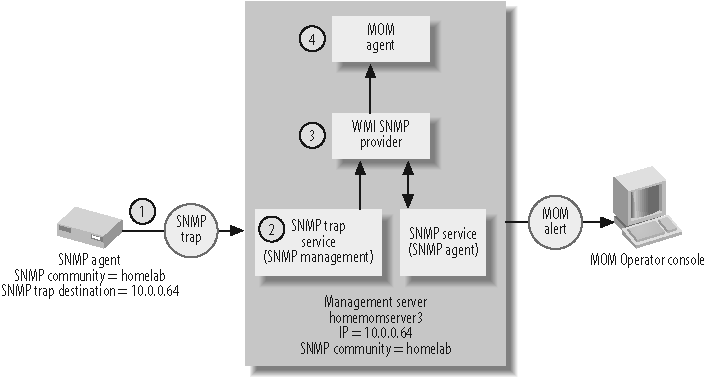Windows and MOM Implementation of SNMP
By itself, MOM cannot receive or send SNMP. In fact, it can’t speak SNMP at all; it relies on the SNMP Windows OS, the SNMP service, and SNMP Trap service for translation and sending or receiving SNMP data. The SNMP service communicates to MOM through WMI, which MOM monitors via the WMI SNMP provider. Figure 10-1 shows the flow and conversion of an SNMP trap from an SNMP device to a management server.

Figure 10-1. SNMP trap and data flow
In this flow, a preconfigured event occurs and the SNMP agent on the SNMP-enabled device generates a trap (point 1 in Figure 10-1). In this example, the device is a member of the SNMP community named Homelab. SNMP communities are insecure boundaries that are created for administrative purposes. The device is configured to send its traps to 10.0.0.64. SNMP trap communication uses UDP port 162, and all other SNMP management communication occurs over UDP port 161. Therefore, SNMP information is not secure by default and delivery is not guaranteed.
The trap is received (point 2 in Figure 10-1) by the management server, which is running the SNMP Trap service and the SNMP service. The SNMP Trap service allows the management server to receive and interpret SNMP traps. When the SNMP Windows component is installed on a server, the SNMP Trap service and SNMP service are both installed. The SNMP service is essentially an ...
Get Essential Microsoft Operations Manager now with the O’Reilly learning platform.
O’Reilly members experience books, live events, courses curated by job role, and more from O’Reilly and nearly 200 top publishers.

